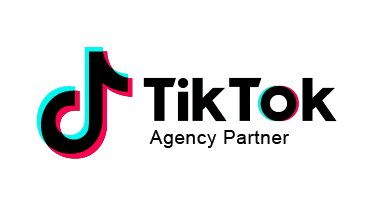Search Engine Marketing (SEM): How to Do It Right
Search Engine Marketing is a powerful marketing strategy that helps you place your business higher on Google Search. With every business, and every competitor, vying for the attention of your targeted audience, the need to be the top suggested search result is escalating.
But what is SEM? And why do businesses prefer to search ad networks and use an SEM agency to plan out and implement a robust search engine marketing strategy?
If this is what you’ve been wondering, let’s read further to find out.
Table of Contents
What is SEM?
SEM is an acronym for Search Engine Marketing. It is a paid tool which businesses can use to boost their discoverability and land their website at the top of search engine results pages.
Search Engine Marketing uses paid adverts. It involves selecting target keywords, bidding on them, and then analyzing the performance of those adverts for your business.
This way, SEM provides your business with an insight of how your users are reacting to the ads and content you create, all while giving your business the opportunity to bid on those words that your company’s targeted user may type as search queries on Google.
So, the better your keyword research is for your Google Ads, the better your ads will perform, and the higher your business will rank on Google.
This, by default, means that your users will then have a higher chance of seeing, finding, choosing, and buying your product first!
Search Engine Marketing And its Types
There are two internet marketing forms of SEM: Organic and Paid.
The Organic approach of SEM is an unpaid version, which is normally termed as Search Engine Optimization.
SEO focuses on the long-term growth of the business and building the credibility of the business. Unlike the paid version, SEO takes quite a lot of time and effort to organically boost the discoverability of your business.
With SEO, you also need to constantly optimize and update the content you’ve created so far to maintain your rank on the search engines.
With SEM, however — the paid medium to market your business — you get a quicker turnaround and you’ll get your business on the face of Google sooner.
There are, however, some terms and conditions imposed by Google for users of SEM and if you want your SEM Strategy to be effective, complying with them is your first step.
How Search Engine Marketing Works
With SEO, Plan and Create a Working Website
As a business, your basic aim for SEM is to attain traffic leads and conversions at a reasonable, budgeted amount. So, the first thing your business will need from you is clarity.
Decide on your advertising budget.
Finalize and focus on your audience — understand them so that your business can plan out how your targeted audience will react to certain content.
It will help you select better, relevant keywords for your website, while allowing you the leeway to create content that aligns with the mindset of your user.
Once you’ve accomplished creating the perfect website, then you can begin with SEM.
However, make sure to check if your website is completely prepared to receive customers.
Finding the Right Keywords for SEM
The process for finding the most suited and relevant keywords for your SEM ad campaign is the same process you go through when you’re optimizing your website for SEO.
As Search Engine Marketing is paid search advertising, you pay per click your ads generate. For your business, this is why the list of keywords you select for your ad will be of high importance.
They will determine the kind of leads you will generate for your website, and the type of traffic you will be pulling from the crowd.
As each click will cost you money, you don’t want any non performing leads to be a part of the traffic you generate.
So, you need to comprehensively research your target audience for your keyword management and strategy.
SEM AD and Account Structure
Just placing keywords together isn’t sufficient to score you a higher SEO or SEM rank or to get you better leads.
The way you group your keywords together can play an important role in boosting your click through rate and performance.
The perfect way to create your Google ads or Bing ads account for Search engine marketing is by structuring your account in a specific, pretested manner. For your Google Ads account, for example, you will need:
- Ad Campaigns – directed towards a set of services or products.
- Ad Groups – subcategories that are focused on any one service or product your business is out to offer.
- Specific Ad Groups – select Keywords for the number of Ads in that particular group.
- A separate Landing Page for each of your Ad campaigns.
SEM and The Google Ad Auction
Google places ads on its face as per the relevance of the user’s search query.
So, not all ads appear on Google with every search.
Instead, the type of keywords you bid on and how relevant they are to the user’s commercial intent will determine if your ad would be among the lucky bidders.
Once your business is on that list, the last two factors identifying whether your ad will make the SEM cut is the maximum bid you’ve placed on that keyword, and the overall Quality Score of your Google Ad or Bing Ad.
The Quality Score of your Google Ad words will also always be given priority over the amount of bid you’ve placed. So, even if your ad has the lowest bid, but has a very high quality score than chances are that your ad will make the cut.
Effective Search Engine Marketing is a sensitive, but powerful tool to control. Where you use this right for your business, it can lead to the generation multiple good leads for your business. This is probably why businesses look forward to finding an SEM agency or specialist to cater for the perfect SEM strategy for their business.










Join the discussion - 0 Comment